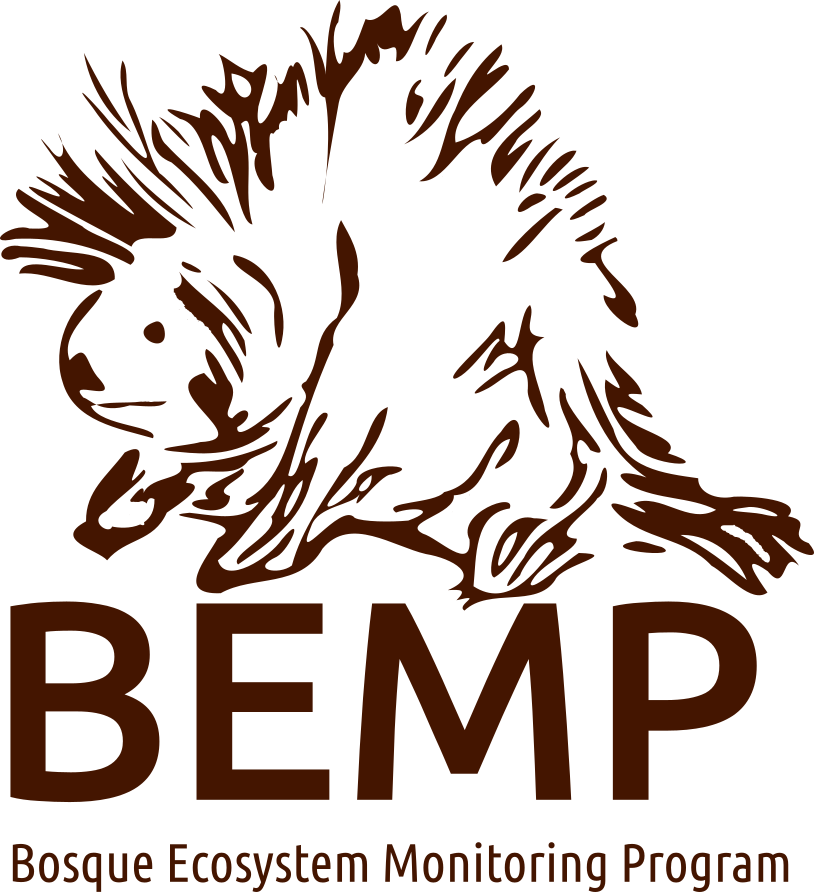Classroom Activities
A classroom visit time of 1-1.5 hours is recommended
River of Change

Great introductory lesson for all groups about the Rio Grande and the bosque. Learn about BEMP and how the middle Rio Grande watershed has changed over the last 2000 years with this hands-on Bosque Education Guide (BEG) modeling activity. We will take your students on an in-class journey to see the changes from the historical Rio Grande to its more managed form today.
~ focus on: ecosystem dynamics, flooding disturbance, human influences on the Rio
~ appropriate for grades 3-12 (see Common Core grid for more details)
BEMP Basics
For school groups that do the BEMP Monthly Monitoring – recommended as the first class, before going out for Monthly Monitoring. An introduction to BEMP and scientific monitoring. We will also go over the BEMP field data procedures for measuring precipitation, groundwater depth, and leaf litter collection. Students will get to interact with the measurement data tools and see maps of the study sites.
~ focus on: groundwater wells, precipitation gauges, leaf-litter fall
~ appropriate for grades 2-12 (see Common Core grid for more details)
Bosque Botany Bonanza
Learn more about the native and exotic plants of the bosque. We will discuss the concepts of trophic levels, producers, consumers, etc, discuss how exotic plants came to the bosque, and share cuttings of real bosque plants and make a field journal with taping, rubbings & scientific descriptions for future field expeditions.
~ focus on: cottonwood, willow, salt cedar, Russian olive, etc.
~ appropriate for grades K-5 or 6 (see Common Core grid for more details)
Bosque Botany Succession
Learn which plants are native and exotic. Then discover how natural and anthropogenic disturbances of the bosque drive ecological succession and change. We’ll play a simulation game and talk about exotic and native plant interactions.
~ focus on: succession, disturbances, cottonwoods, willow, salt cedar, Russian olive
~ appropriate for grades 7-12 (see Common Core grid for more details)
Aqua Adventures
Learn about the water cycle of the Rio Grande and water conservation. We will play a game to model water movement between rivers, aquifers, plants, animals and the atmosphere. We will also bring a model of the Middle Rio Grande Valley to show how humans’ use of water impacts the water cycle.
~ focus on: the water cycle, groundwater/surface water, conservation
~ appropriate for grades 3-6 (see Common Core grid for more details)
Water Budget of
the Rio Grande
Learn about water allocation and conservation in New Mexico. We will do a math-centric conversion of water budgets during “normal” and “drought” years. Students will delve into how the water from the aquifers, rivers ,and reservoirs is distributed around the Middle Rio Grande valley.
~ focus on: economics of water supply, math concepts
~ appropriate for grades 7-12 (see Common Core grid for more details)
Creepy Crawly Critters
Learn common characteristics of arthropods (bugs!), understand why BEMP does pitfall traps, and practice insect classification with hands-on lab activities – sorting arthropods into like-groups , ID-ing and recording species.
~ focus on: local insect identification, data journaling and sorting
~ appropriate for grades 4-12 (see Common Core grid for more details)
Fauna of the
Floodplain Jr.
Explore who the native animals of the bosque are. We will discuss food webs, physical, and behavior characteristics and examine bio-artifacts like skulls, scat and tracks. We’ll take an in-depth look at beavers by dressing up one of the students as a beaver!
~ focus on: adaptations, animal classification & diversity
~ appropriate for grades K-6 (see Common Core grid for more details)
Fauna of the
Floodplain Sr.
Learn more about how animals’ physiological and behavioral adaptions have helped them thrive in the bosque. In small teams, students will research a specific animal of the bosque and then teach the rest of the class about how it serves the functionality of the whole ecosystem.
~ focus on: adaptations, ecosystem functions, migration, reproduction
~ appropriate for grades 6-12 (see Common Core grid for more details)
Leaf Litter Lab
For school groups that do the BEMP Monthly Monitoring. Work with actual BEMP leaf litter to practice identification, sorting, and weighing of BEMP biotic data. We’ll observe common plants of the bosque, and students will sort BEMP collected litterfall by species and biomass. The students’ findings are essential for input into our UNM database.
~ focus on: plant identification, using scales & data sheet entry
~ appropriate for grades 5-12 (see Common Core grid for more details)
Dabbling in Data
For school groups that do the BEMP Monthly Monitoring. Hands-on experience graphing and examining actual groundwater table data (collected by BEMP students). We start with a water cycle activity to show the relative amount of freshwater on Earth. We then discuss monthly monitoring collections; graph data from an actual BEMP field site to show the relationship between groundwater and river flow.
~ focus on: shallow groundwater table, graphing, comparison of data points
~ appropriate for grades 4-12 (see Common Core grid for more details)
Stormwater Science
Examine how the Rio Grande is directly tied to health of surrounding watershed. We’ll explore the meaning of a watershed, how pollutants enter our water system, and how individuals can contribute to environmental degradation or environmental sustainability.
~ focus on: run-off, nutrient-loading and pollution, water quality
~ appropriate for grades 6-12 (see Common Core grid for more details)
~Extension lessons: Water Chemistry Lab or Stormwater Study Trip to the Rio Grande
